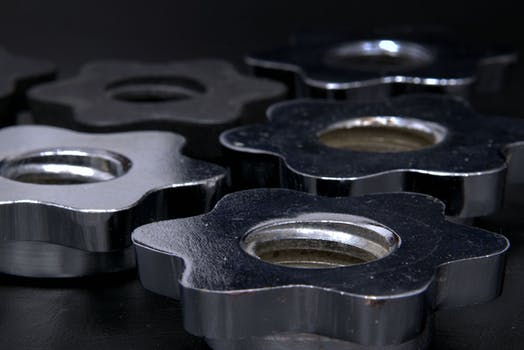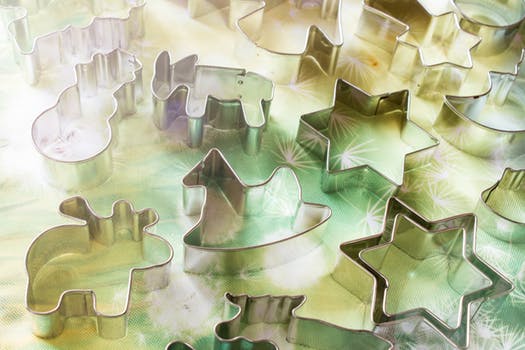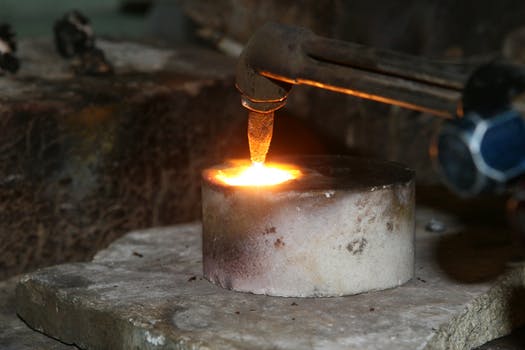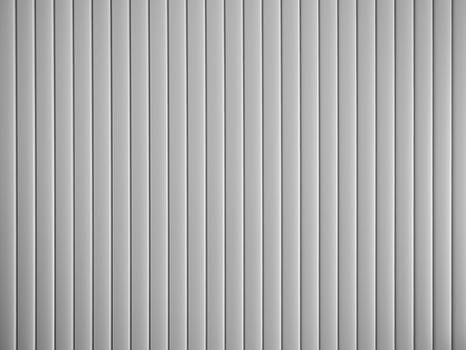
A Comprehensive Guide to Aluminum Profiles in the Philippines
When it comes to all the factors that have to do with aluminum profiles here in the Philippines, it’s important to first have an adequate understanding on the basic properties of aluminum. Aluminum, in its most fundamental function, is a chemical known for the symbol AI and with the atomic number 13. The basic characteristics of aluminum as a metal include: silvery-white, soft, nonmagnetic, and ductile.
Aluminum is an exceptional metal due to its low density and capabilities to resist corrosion by means of passivation. The alloys of aluminum are critical to the transportation and building industries. The oxides and sulfates are the most utilized compounds found in aluminum.
An aluminum profile here in the Philippines basically refers to the form and shape of an aluminum. Extrusion is essentially the technique and method that is often used to transform and reshape materials such as plastics, metals, ceramics, concrete, etc. into profiles that can be utilized as constructive components for a multitude of commercial, residential, and industrial designs.
Because of the unique properties of aluminum; it is the most common material to be extruded. Aluminum profiles here in the Philippines are used as vital pieces in machine parts, cooking utensils, furniture design, automotive parts, scuba tanks, camera lenses, gym equipment, solar arrays, windmills, to name a few.
The extrusion process is a simple procedure that involves heating and forcing the metal with a hydraulic ram through a shaped opening in a die. Materials that have been extruded emerge in the form of a piece with the sample profile as the die opening. Extrusion dies are also known as steel disks. These can be manipulated to the form virtually any size or shape.
- There are some dies that are flat and produced flat as solid profiles.
- Other dies have hollow properties and produce semi-hollow profiles: one part containing the hole or cavity, through which the metal is forced, and the other part where the outline is shaped.
- Some profiles are pressed through just one single cavity, while smaller-sized profiles can be pressed through multiple-hole dies with as much as 16 cavities.
- There are other dies that incorporate mixtures and combinations of solid, semi-hollow, and hollow shapes into one die.
- Every type of die serves specific functions that depend on the ideal design and size of the profile.
A wide array of functions can be incorporated to aluminum profiles here in the Philippines. They can be utilized as countless products such as the following:
- Tubes
- Tracks
- Bolts
- Decorative design elements
- Framing components
- Hinges
- Heat sinks
Aluminum as a metal has provides many advantages, and in many cases, can play a role as a more superior alternative for copper, steel, wood, and plastic. Due to aluminum’s unique characteristic, there are many advantages that come with it for several application purposes. That’s why even Philippine homes have aluminum windows since it’s THAT good.
The metal’s thermal and electric conductivity entails the fact that to aluminum profiles here in the Philippines and all around the world an indispensable component to the electronics industry.
The lightweight and impressive strength makes aluminum a foundational property in the automotive industry.

Processes of Extrusion
As mentioned earlier, aluminum profiles here in the Philippines are shaped and crafted by means of extrusion.
The process starts off with heating the stock material (depending on whether hot or warm approach). The material is then loaded into the container within the press. A block is placed behind where the ram presses the material and pushes it out the die. The extrusion is stretched for it to be straightened. If more specialized properties are required, it may be cold worked or heat treated.
Extrusion ratios are identified as the initial cross-sectional area that is divided by area of final extrusion. One of the most significant benefits of the extrusion process is that the ratios can be incredibly large while still being able to produce high-quality products and accessories.
Hot Extrusion
A hot working process, which means that is achieved above the material’s recrystallization temperature as to prevent the material from work hardening and also to make it more convenient and smoother to push through the die.
Hot extrusions are usually made on horizontal hydraulic presses that can range anywhere from 230 to 11,000 metric tons. The pressures can also range in anywhere from 30 to 700 MPA, which means that lubrication is a necessity (either oil or graphite for low-temperature extrusions, and glass powder for extrusions that are higher in temperature).
Cold Extrusion
Cold extrusion is a process that is achieved under room temperature or any level that is relatively near-room temperature. The main advantage of cold extrusion over hot extrusion is the lack of oxidation, higher strength because of cold working, closer tolerances, enhanced surface finishes, and improved extrusion speeds if the material is subject to hot shortness.
Materials that are generally cold extruded are the following:
- Lead
- Tin
- Aluminum
- Zirconium
- Copper
- Molybdenum
- Vanadium
- Niobium
- Steel
- titanium
A few examples of products that have been made via the cold extrusion process include: fire extinguisher cases, shock absorber cylinders, gear blanks, collapsible tubes, etc.
Warm Extrusion
During the month of March in 1956, a Patent in the United States was filed for a process of warm extrusion. It outlines that the many critical advantages of the warm extrusion process can be achieved with both ferrous and non-ferrous metals or alloys.
Warm extrusion is done with above room temperature, however below the recrystallization temperature is also done in order to achieve the appropriate balance of necessary force levels for ductility and final extrusion properties.
Friction Extrusion
Friction extrusion was invented in the United Kingdom and patented in 1991. This method of extrusion was initially intended mainly as a process for the construction of homogeneous microstructures and distribution of particles for metal matrix composite materials.
This method of extrusion varies from conventional means of metal extrusion because of the charge rotating relative to the extrusion die. A force of extrusion is applied in order to push the charge against the die. The relative rotational motion between the charge and the die have different significant effects on the process:
- The relative motion in the plane of the rotation leads to large shear stresses.
- The substantive levels of deformation in the plastic that is in the region of relative rotational movement promotes a solid welding of powders or other finely segregated precursors: flakes, chips, etc.
Micro Extrusion
Micro extrusion can also be seen as a type of micro-forming extrusion process that is done within submillimeter ranges. Similar to extrusion, a piece of metal is pushed through the orifice of a die. However, the resulting product’s cross section has the capability of fitting through a 1mm square.
Many specific techniques for micro extrusion have been developed through the years. But regardless of approach, the most challenging aspect of the micro extrusion methodology is creating a successful micro extrusion machine is the manufacturing of the ram and die.

Advantages of Aluminum Extrusion Profiles
In today’s world, engineering designers feel a greater need and demand for constructive materials that are stronger, lighter, and more corrosion resistant. The best choice for these engineers and business owners is aluminum, due to its remarkable properties, characteristics, and capabilities.
Aluminum profiles here in the Philippines and all around the world have malleable qualities which significantly allow for more flexible options with regards to cost effectivity in design and production. The malleable properties do not result in any evidence of strength and durability compromise for final products but serves for more workability as well as more substantial strength in terms of weight ratio.
These alloys and their highly impressive mixture of qualities serve as the foundations for a plethora of products that can be easily crafted through aluminum extrusion. These properties are evident in a diverse set of applications:
- High conductivity of electricity and heat
Air conditioning, heat stinks, radiators, electronics, etc.
- High strength to low weight ratio
Marine, railway stock, aeronautical, automotive, etc.
- Corrosion resistance
Architectural, mining, military, marine, wires, cables, etc.
Aluminum extrusion is usually the most ideal solution for manufacturers with very specific needs for cost savings, design flexibility, and product performance for aluminum profiles here in the Philippines.
Aluminum extrusion processes for aluminum profiles here in the Philippines also offer more benefits aside from savings on weight. The components are designs to include other features that serve as fixings, channels, and interlocking systems.
Aluminum is hailed as the environmentally friendly metal because it is completely recyclable and retains all the essential properties of the original metal.

Tips for Aluminum Profile Design
It is well-known that aluminum profiles here in the Philippines are faster to design through aluminum extrusion methods. But the general structural integrity of any final product can be vastly improved with different analyses and considerations in design. Let’s take a look at 3 simple guiding points for the creation of more reliable aluminum extrusion structures:
Selecting the Best Extrusion Profile
All extrusion profiles are not made equal. The rigidity levels of aluminum profiles here in the Philippines with similar outer dimensions can greatly differ based on the moment of inertia. The important note here is to consider the cross-section’s area, which has a direct impact on the overall weight of the assembly. The best aluminum profiles here in the Philippines are those which are high in rigidity.
Meticulously Selecting Extrusion Joint Configuration
Choosing the most appropriate aluminum extrusion profile is only one segment of the entire process that is required for creating effective and reliable structures. The assembly joint configuration is able to substantially alter the rigidness and structural integrity of any design.
One of the main things to avoid is when assembly joints are solely dependent on friction in order to support the load. The more efficient alternative approach is to position one extrusion on the top of another extrusion. Assembly plates are then to hold all the pieces together, however, only able to withstand a minute amount if force.
Assembly joints that only rely on friction cannot always be avoided. But in such cases, designers need to attain an understanding of how much friction can be generated from a single fastener and multiplied by the number of solicited screws.
Utilizing High-Strength Extrusion Systems for Specific Applications
The combination of effective assembly joints with the right aluminum extrusion profile can undoubtedly make significant improvements to the structural integrity of your assemblies. There are systems that strategically create a more solid interface between extrusions and assembly plates.
These machines essentially eliminate angular misalignment because the plates are no longer found by the screw’s loose clearance holes. Another primary benefit is the increase of slippage resistance by means of converting friction joints to structurally bounded joints.
Aluminum Profiles with ONE SKY
When it comes to the best aluminum profiles here in the Philippines, One Sky Aluminum & Stainless Steel Supply Enterprise, established in 2011, continues to thrive in setting higher standards for Philippine aluminum.
We have built, maintained, and developed a powerful market presence in the Philippines and have rapidly amassed impressive product dominance in the country’s aluminum industry over an unbelievably short amount of time. Our company unapologetically attributes our resilient progress to an uncompromised dedication for providing the clientele with highly-advanced systems for world class aluminum products.
Our first-rate aluminum profiles can be traced to our cultivated vision of striving to be the best service driven, highly-reputable, most credible, fair priced, aluminum supplier in the Philippines. Our aim is to be the top enterprise in the country’s aluminum industry.
We serve to assist stainless fabricators and contractors in enhancing their knowledge and skills for aluminum products by providing the most advanced technologies and updated information from all over the world. We are on a mission to help local fabricators enhance and develop their standards in stainless.
By instilling the values of integrity, initiative, loyalty, and innovation to our people, we continue to grow. Click here for more information on how we can help with your aluminum profile inquiries!